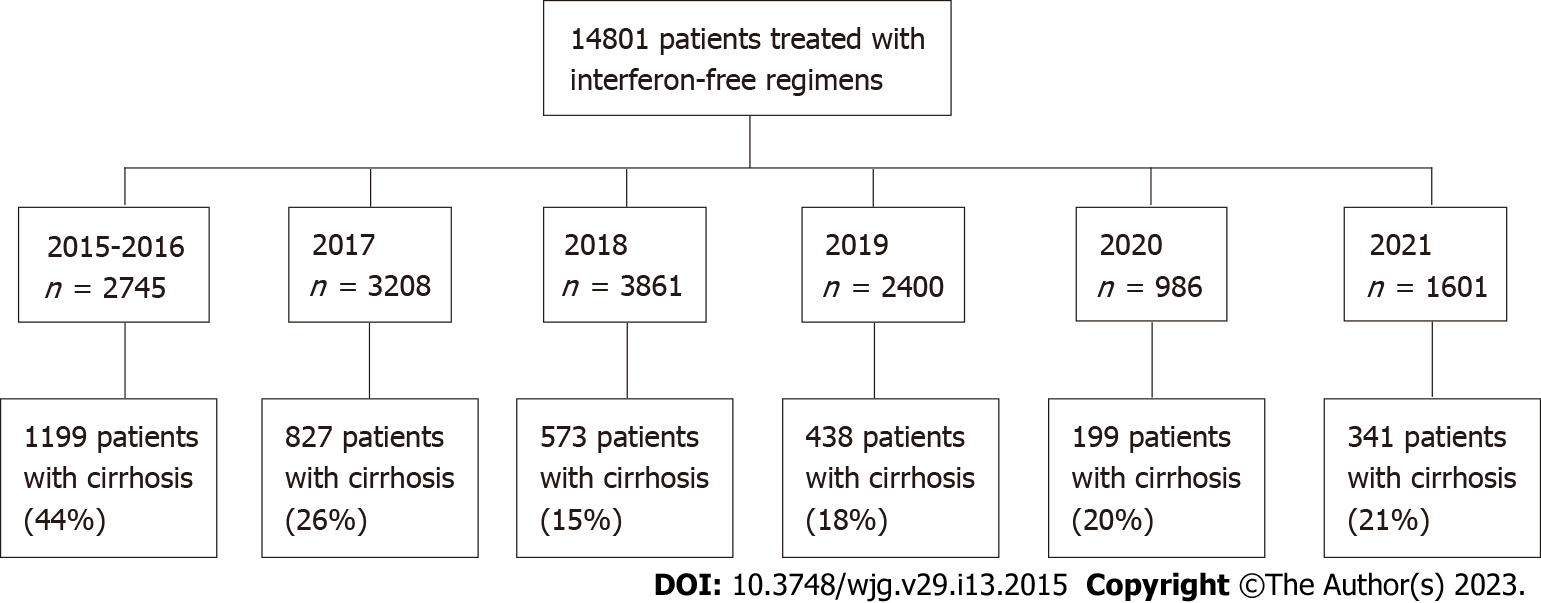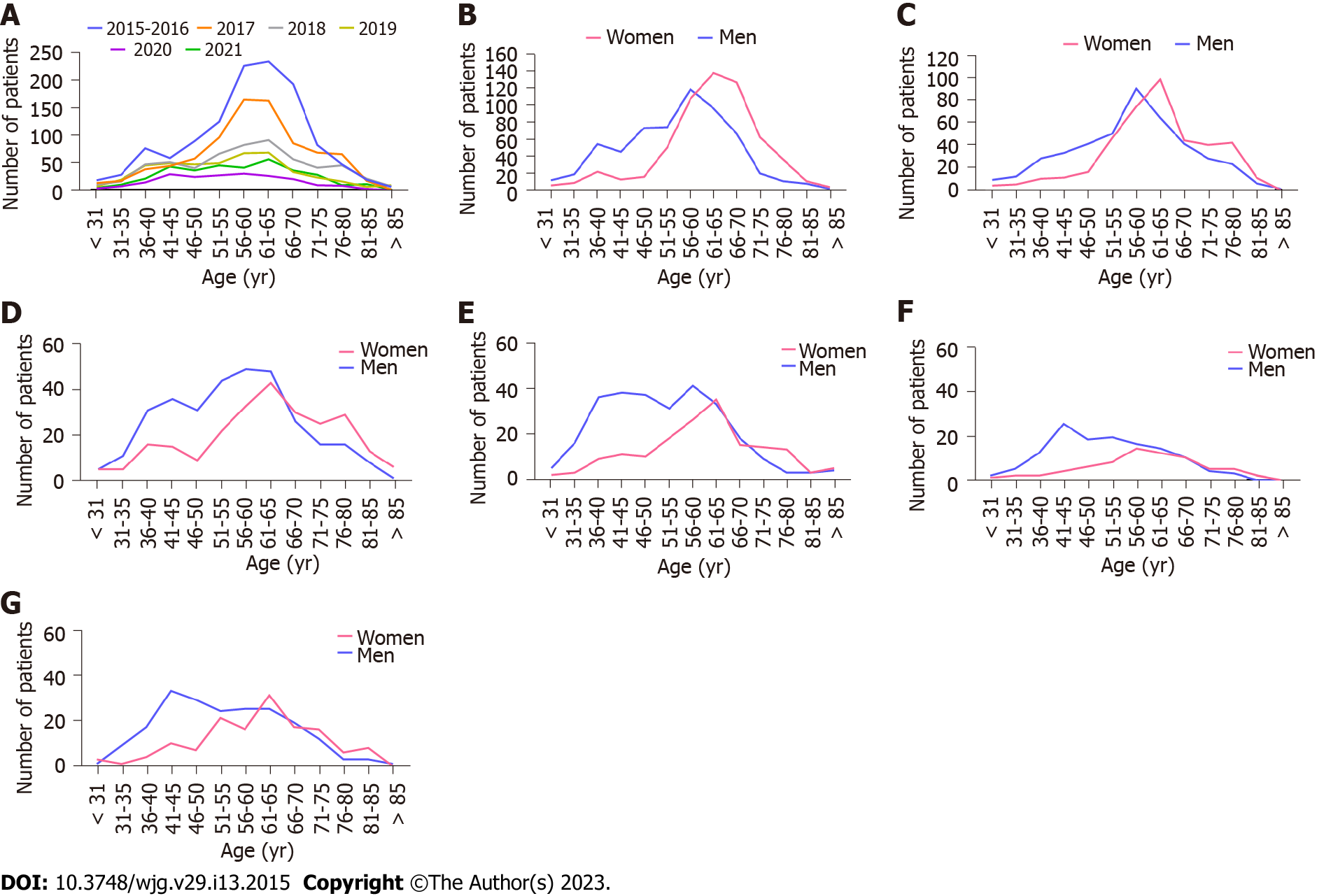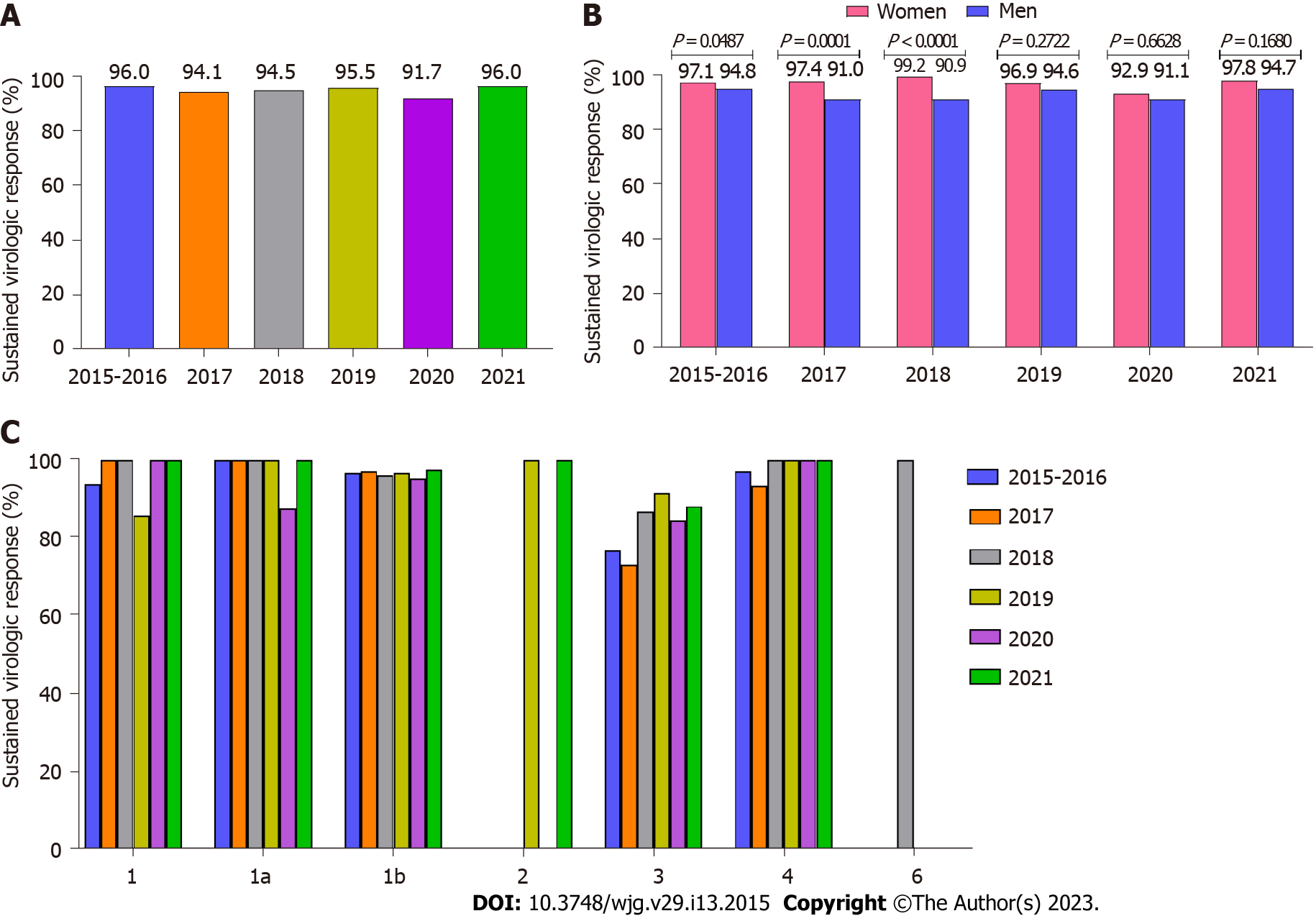Copyright
©The Author(s) 2023.
World J Gastroenterol. Apr 7, 2023; 29(13): 2015-2033
Published online Apr 7, 2023. doi: 10.3748/wjg.v29.i13.2015
Published online Apr 7, 2023. doi: 10.3748/wjg.v29.i13.2015
Figure 1 Distribution of patients treated for hepatitis C virus infection in six-time intervals.
Figure 2 Age distribution in all patients treated in six-time intervals and according to gender in 2015-2016, 2017, 2018, 2019, 2020, and 2021.
A: In six-time intervals; B: In 2015-2016; C: In 2017; D: In 2018; E: In 2019; F: In 2020; G: In 2021.
Figure 3 Sustained virological response rates by hepatitis C virus genotype, in six-time intervals (per protocol analysis), and according to gender.
A: In six-time intervals (per protocol analysis); B: According to gender; C: By hepatitis C virus genotype.
- Citation: Brzdęk M, Zarębska-Michaluk D, Rzymski P, Lorenc B, Kazek A, Tudrujek-Zdunek M, Janocha-Litwin J, Mazur W, Dybowska D, Berak H, Parfieniuk-Kowerda A, Klapaczyński J, Sitko M, Sobala-Szczygieł B, Piekarska A, Flisiak R. Changes in characteristics of patients with hepatitis C virus-related cirrhosis from the beginning of the interferon-free era. World J Gastroenterol 2023; 29(13): 2015-2033
- URL: https://www.wjgnet.com/1007-9327/full/v29/i13/2015.htm
- DOI: https://dx.doi.org/10.3748/wjg.v29.i13.2015















